Growth of the Rainwear Market
It's no secret that fashion trends come and go, but one thing that has proven to be a constant is the demand for rainwear. Believe it or not, the rainwear market is flourishing, and it's set to hit new heights in the coming years. From industry projections to trends driving this growth, let's take a closer look at the state of the rainwear market.
Market Size and Projections
While many might view rainwear as a simple necessity, the numbers tell a different story. The global rainwear market was valued at a staggering USD 886.4 million in 2020. But, hold on to your umbrellas, because it doesn't stop there. The rainwear market is expected to expand at a Compound Annual Growth Rate (CAGR) of 6.4% from 2021 to 2028. This forward momentum forecasts an estimated market size of over USD 1,828.0 million by 2030.
Moreover, the bright future of rainwear doesn't seem to end with 2030. Fast forward another year, and the market is predicted to achieve an impressive USD 2.2 billion by 2031, representing a CAGR of 5.9%. That's right, despite being something most of us don't think twice about when dressing for a rainy day, rainwear is a rapidly growing sector within the fashion industry.
In reflection, these forecasts underline the continued market attractiveness of rainwear, illuminating how consumers perceive it as more than just a practical commodity but also a fashion item. Rain or shine, the demand for rainwear seems to be on an upward trajectory, and all signs indicate that it will continue to grow for the foreseeable future.
So, whether you're an investor looking at potential growth areas or a consumer interested in the cycle of fashion trends, keep an eye on the rainwear market. It's clear that this sector is anything but gloomy. These increasing market projections prove that when it comes to rainwear, there's a lot more than meets the eye, making it a trend worth watching.
Factors to Consider When Choosing Rain Gear
Rain, beautiful though it may be, can quickly put a damper on your outdoor activities if you aren't correctly equipped. For those unfamiliar with the nuances of selecting the appropriate gear, choosing the right rain gear can seem like an overwhelming task. The good news? It doesn't have to be! By focusing on three key factors - waterproof capabilities, weight and packability, and durability - you can ensure you pick the perfect equipment for those rainy day adventures.
Waterproof Capabilities
Arguably the most critical factor to consider when choosing rain gear, the waterproof capabilities of your equipment can mean the difference between a comfortable journey and a decidedly damp disaster. It's not just about keeping you dry, but also about ensuring your gear remains functional and dry too. Present-day raincoats are made of waterproof materials that can repel water, keeping you dry during the heaviest downpours. Some even have special features like adjustable hoods, wrist cuffs, and watertight zippers, designed to keep the rain out.
Weight and Packability
Next up on our list of considerations is weight and packability. We've all been there - lugging around a heavy, bulky raincoat that's more burden than benefit. Modern rain gear technology focuses intensely on this facet, with many brands offering lightweight and easily packable solutions. So whether you are planning a leisurely city stroll or an intense mountain hike, gaining an understanding of the gear's weight and ability to pack down can save you a lot of unnecessary hassle and load.
Durability
Last but certainly not least is durability. In the face of harsh weather, you want your gear to withstand the elements and serve you for a long time. Contemporary raincoats are made with tear-resistant materials, ensuring they stay in top shape regardless of the conditions.
Remember, the perfect rain gear is a balance of these three characteristics. A coat might be highly waterproof but extremely heavy. Or it may be lightweight and packable but offers marginal water resistance. Analyze your specific needs and make an informed choice. After all, the right rain gear can turn a rainy day from a bleak burden into a fun, refreshing adventure.
Types of Waterproof Materials
Whether you're planning a rainy hike, a winter journey, or simply trying to stay dry during a downpour, waterproof materials can be your best bet. They come in a variety of types, each with unique properties that cater to specific uses and environments. Today, we'll delve into the world of waterproof materials, examining three of the most widely-used varieties: EVA, Polyester, and Tri-laminate fabric.
EVA
Let's begin with Ethylene Vinyl Acetate (EVA). A copolymer of ethylene and vinyl acetate, EVA has long been lauded for its waterproof qualities.
- Flexibility: EVA can stretch impressively without breaking, making it an excellent choice for objects that need to withstand constant motion or pressure, like rain boots or umbrellas.
- Resistance to UV rays: Exposure to the sun won't degrade EVA quickly, unlike many other materials.
- Softness: Despite its strength and flexibility, EVA is soft to the touch, enhancing comfort during use.
However, EVA isn't best for every situation. The material can warp under intense heat, and while it does resist UV rays, it won't endure them indefinitely.
Polyester
Next on the list is Polyester. Prominent in clothing, Polyester is a synthetic fabric that holds up in many scenarios.
- Durability: Polyester resists wear and tear extraordinarily well. It can handle countless wash cycles without losing its form or color.
- Water-resistance: Polyester isn't inherently waterproof but treating it with waterproof coatings can keep you dry even during heavy rain.
- Quick-drying: Even when it does get wet, Polyester dries quickly, making it a great choice for clothes that are frequently washed or exposed to moisture.
Despite its advantages, Polyester isn't perfect. It may feel less natural than cotton or wool, and it can be less breathable, which might lead to discomfort in hot climates.
Tri-laminate Fabric
Finally, we have the Tri-laminate fabric. As its name suggests, this material features a three-layered construction, typically with a waterproof layer sandwiched between two plies of protective fabric.
- Optimal waterproofing: The middle layer of Tri-laminate fabric is typically some form of plastic, which forms a barrier that water can't penetrate.
- Durability: Because the waterproof layer is guarded by two protective layers, Tri-laminate fabric can withstand wear and tear even better than Polyester or EVA.
- Versatility: Given its protective and waterproof properties, Tri-laminate fabric excels in outdoor gear, from tents to ski jackets.
Tri-laminate does come with a couple of pitfalls, though. It can be heavier and less pliable than EVA or polyester, which might limit its use to certain types of apparel.
To summarize, the choice between EVA, Polyester, and Tri-laminate will depend on your specific needs and the environment you'll be facing. By understanding the pros and cons of each, you'll be better equipped to make an informed decision when the skies open up.
Top-rated Rain Jacket Brands
Everyone knows the saying, "April showers bring May flowers." But see, Mother Nature seldom sticks to a schedule, which is why it's essential to have a reliable rain jacket stashed in your wardrobes or backpacks. In this article, we'll explore some of the top-rated rain jacket brands that deserve your attention.
Patagonia
First up is Patagonia, an all-star in the world of outerwear. There's no doubt why this brand often tops the charts - Patagonia jackets are known for their superior craftsmanship and eco-conscious materials. They combine functionality and style, offering merchandise that can withstand the elements while making you look good. Whether you're hiking the Appalachian Trail or trekking through the city in pouring rain, Patagonia's got you covered.
The North Face
Another brand that needs no introduction is The North Face. It has a long-standing reputation for quality and durability, which is evident in its vast and varied collection of rain jackets. With The North Face, you can find jackets with innovative designs and features like breathable, seam-sealed fabrics and adjustable hood systems. These masterpieces ensure that you stay dry and comfortable even in demanding weather conditions.
Arc'teryx
If you're ready to splurge a bit, then Arc'teryx is an excellent option. Renowned for its chic and minimalist design approach, this brand offers jackets that are just as much about high performance as they are about aesthetics. Arc'teryx rain jackets are designed with innovative technology and materials engineered for utmost protection and durability. The cherry on top? They are lightweight and packable, making them ideal for those who love venturing into the outdoors yet want to travel light.
Helly Hansen
Moving on, we have Helly Hansen, a brand synonymous with marine and sailing gear. Their jackets stand out for their innovative Helly Tech fabric that wields waterproof, windproof, and breathable properties. This coupled with their Scandinavian design sensibilities results in jackets that can withstand rough weather with ease while remaining stylish. With Helly Hansen, you get the perfect balance of form and function.
Each of these brands offers a stellar line-up of rain jackets that are designed to keep you comfortable and dry. They provide a range of options to suit different needs and budgets, ensuring that there's something for every rain-braving adventure-seeker out there. Hey, when it comes to bracing against the weather, why not do it in style? The elements might be unpredictable, but your rain gear doesn't have to be. Gear up, step out, and let these top-rated rain jacket brands protect you from whatever the skies send down. Rain can't dampen your spirits when you're well geared!
Popular Waterproof Technologies
In the world of outdoor gear, waterproof technology reigns supreme. It plays a crucial role in delivering performance, convenience, and paramount of all, protection against the elements. Just imagine setting out on an adventurous hike only to be caught rudely in a torrential downpour. Without the right waterproof gear to keep the moisture at bay, your journey can turn from a delightful excursion into a waterlogged nightmare in seconds. Among myriad waterproof technology names, two stand tall: GORE-TEX and Futurelight.
GORE-TEX
Widely renowned as an industry leader in waterproof technology, GORE-TEX uses a unique layering method to offer maximum water resistance without compromising breathability. Here's how it works:
- Microporous Structure: The GORE-TEX membrane is made of over 9 billion pores per square inch. These microscopic holes are small enough to prevent water droplets from penetrating through, but large enough to let sweat particles evaporate, ensuring your comfort in varying climatic conditions.
- Layering: This membrane is normally sandwiched between a high-performance lining and outer textile, creating a robust barrier against both external moisture and internal perspiration.
- Durability: The technology's impressive durability means it can maintain its effective waterproofing and breathability over the product's life-cycle, provided it is well-maintained.
"Do not compromise on your comfort and safety. Be smart; choose GORE-TEX," a renowned mountain climber once asserted, encapsulating the popularity and trustworthiness of the brand in the outdoor community.
Futurelight
While GORE-TEX has set a tough benchmark, North Face's Futurelight is an innovative technology giving it a run for its money. Introduced to revolutionize the outdoor gear industry, Futurelight aims to bring unprecedented levels of air permeability to waterproof garments. Here's why it's impressive:
- Nano-spun Technology: Futurelight employs a unique process of "nano-spinning," which creates incredibly small fibers that are then woven together to form a waterproof and ultra-breathable membrane.
- Versatility: One of Futurelight's key advantages is its adaptability. The nano-spinning process allows North Face to modify the weight, stretch, breathability, durability, construction (knit or woven), and texture of the material to match specific activities or conditions.
- Sustainability: Futurelight is made with 90% recycled materials and uses a production method that cuts chemical consumption, making it a more environmentally friendly choice.
Both GORE-TEX and Futurelight are path-breaking technologies that have redefined waterproof tech's benchmarks. Whether for intense outdoor adventures or everyday use, they guarantee to keep you comfortable, dry, and ready for whatever Mother Nature throws your way. Always remember, choosing the right waterproof technology helps safeguard your adventure.
Tear-Resistant Rain Jackets
When it comes to battling the elements, investing in a high-quality, tear-resistant rain jacket is crucial. These rainproof wonders are your best defense against unpredictable weather, ensuring you stay dry and comfortable, no matter how vicious the downpour. Combining durability and style, the right rain jacket seamlessly integrates reinforced seams, durable zippers, and rip-stop fabric. Let's delve into why these three features are so integral in your quest for the perfect tear-resistant rain jacket.
Reinforced Seams
The strength of a tear-resistant rain jacket often lies in the details. Reinforced seams are, without a doubt, one of the most crucial aspects. These are often subjected to the highest strains, especially during intense physical activities or under heavy rain.
Key features of reinforced seams are:
- Sturdiness: These seams are built to bear weight and resist tearing, making them a pillar of the jacket's overall durability.
- Waterproof: Despite being under constant tension, reinforced seams are designed to prevent water from seeping in.
- Longevity: These seams are not easy to fray or wear out, extending the lifespan of your jacket substantially.
Durable Zippers
While we often overlook the importance of zippers, they're the unsung heroes of many tear-resistant rain jackets. With their ability to withstand repeated use without failing, durable zippers are a critical component of rainwear longevity. Here's why:
- Strength: The robust build of these zippers avoids breakage or disfigurement, providing reliable protection.
- Water Resistance: These zippers are designed to limit, if not prevent, the ingress of water.
- User-friendly: Despite being tough, these zippers offer a smooth operation, making the jacket easy to don and remove.
Rip-stop Fabric
Moving onto the piece de resistance of tear-resistant rain jackets: the rip-stop fabric. This unique material is the epitome of durability, specifically woven to prevent tears from spreading.
Have a look at the advantages:
- Tear Resistance: The reinforced threads intertwined within rip-stop fabric offer unparalleled resistance to tearing and ripping.
- Lightweight: Despite its reinforced characteristics, rip-stop fabric remains light, keeping the jacket comfortable for all-day wear.
- Quick-drying: In addition to being tear-resistant, this material also has quick-dry properties, warding off dampness after a downpour.
Finding the right tear-resistant jacket can be an overwhelming process. By understanding the importance of reinforced seams, durable zippers, and rip-stop fabric, you're well on your way to making an informed choice. So why wait? Arm yourself with the ultimate weather-proof armour today.
Specialized Rain Gear
When it comes to braving the elements while working outdoors, reliable and well-constructed rain gear is essential. It's not just about staying dry, but about ensuring safety and comfort in rugged, difficult weather conditions. The key is to invest in specialized gear crafted explicitly for the job, offering durability, wind-resistance, and compliance with vital safety standards such as ANSI/ISEA 107 and NFPA.
Carhartt - Durable and Wind-Resistant Gear
Leading the way in innovative outdoor gear is Carhartt. Known for creating products that stand up to every challenge Mother Nature chooses to throw, Carhartt provides attire that’s as determined as the individuals who wear it. Is it raining sideways with gale-force winds? No worries, Carhartt offers durable and wind-resistant rain gear that'll have you covered in such scenarios.
Their wind-resistant options are layered and triple-stitched for remarkable durability. The fabrics are specially treated to repel water, maintaining breathability so you can stay comfortable underneath. Plus, the reinforced seams add to its overall strength, ensuring you can confidently face the wind and rain without worrying about gear failure.
ANSI/ISEA 107 and NFPA Compliance
As important as durability and wind resistance are, it's equally crucial to consider safety standards when selecting the right rain gear. Specialized gear complying with ANSI/ISEA 107 and NFPA standards ensures safety in rugged work environments, making it an essential requirement for occupational outdoor gear.
Compliance with ANSI/ISEA 107 means the rain gear is high-visibility, especially important on misty or rainy days when visibility is compromised. This keeps workers safe on busy construction sites or when operating near traffic.
On the other hand, NFPA (National Fire Protection Association) compliance means the gear offers flame resistance properties. In unpredictable work environments where fire hazards might exist, this feature could be a lifesaver.
Investing in specialized rain gear that ticks all these boxes – durability, wind resistance, and safety standard compliance – will ensure you're protected and comfortable, whatever the weather throws at you. With reliable brands like Carhartt and the reassurance of ANSI/ISEA 107 and NFPA compliance, workers can face the elements with utmost confidence.
Maintenance and Longevity
A well-preserved car engine doesn't only run smoothly, but it also extends the overall life of your vehicle. But what's the secret to ensuring your car engine stays in top shape for the long haul? The answer lies in regular maintenance and understanding its massive impact on your vehicle's longevity.
Regular Maintenance
Running your car without regular check-ups is like going on a marathon without eating and hydrating properly - sooner or later, your body will give up. This is exactly what happens to an automobile that's not consistently looked after.
- Timeline Management: Sticking to your auto service schedule is vital. Most car manufacturers recommend getting your oil changed every 3,000 - 5,000 miles or every 3 month, whichever comes first. But each car is different, so check your vehicle's manual for specifics.
- Proactive Repairs: Another excellent tip for effective maintenance is to address issues promptly. Rather than waiting for a problem to escalate, invest in making those necessary repairs before they become major concerns. This might save your car engine from severe damage in the future.
- Regular Cleaning: Just like your home, your car engine also deserves some cleaning and dusting. This has been proven to enhance the engine's functionality and longevity by warding off the damaging effects of grime and dust.
This comprehensive and disciplined approach to maintenance will go a long way in keeping your car engine in pristine condition.
Cost-Effectiveness
Some car owners think that regular maintenance is an unnecessary added cost — yet nothing could be further from the truth. Yes, maintenance comes with a price, but it's an investment in your vehicle's longevity.
By catching issues early, you'll definitely spend less money in the long run. Imagine having to replace an entire engine because a simple oil leak was ignored. Plus, preventative maintenance often leads to improved gas mileage, which can save you at the pump.
In reality, proper maintenance practices don't drain your pocket but ensure your car maintains its peak performance, thereby increasing its lifespan while also reducing eventual hefty repair costs.
To put it simply, regular maintenance may involve an upfront cost, but it secures a long-term gain. That’s a win-win situation for any car owner!
Growing Market of Lightweight and Tear-Resistant Rain Gear
The rain gear industry is increasingly shifting towards the production of lightweight and tear-resistant gear, primarily driven by consumer demand for safe, comfortable, and long-lasting options. A combination of fashion-forward designs with advanced fabric technology results in raingear that not only keeps you dry but is also easy to pack and tough enough to withstand the elements.
As part of this rising trend, one of the forerunners is Hurricane Raingear, a trusted name in weatherproof attire. Their products infuse practicality with enduring style, delivering superior protection without compromising comfort. Handcrafted in the Pacific North West, each piece from Hurricane Raingear represents an assurance of quality and longevity.
Here's what sets them apart:
- Waterproof and Breathable: Hurricane's gear is 100% waterproof but also allows for adequate airflow, contributing to comprehensive, season-round comfort.
- Reflective Striping: The addition of 3M striping improves visibility in low-light situations, an essential safety feature when you're caught in a downpour.
- Tough, Yet Flexible: Rigorously tested for rip-resistance, their gear also allows unrestricted motion, making it ideal for outdoor activities or demanding job sites.
- Fast, Reliable Shipping: You're not left in the rain, waiting. They ensure tracked shipments with dedicated support seven days a week.
In a world where quality and durability have become the order of the day, Hurricane Raingear is truly a beacon of excellence, promising an unrivaled blend of style, comfort, and durability in rainwear.
Frequently Asked Questions
-
What are the key features to look for in waterproof rain gear?
When choosing waterproof rain gear, look for features like sealed seams, waterproof zippers, adjustable cuffs and hems, and a high waterproof rating. These features ensure better water resistance and keep you dry in heavy rain.
-
What materials are commonly used in tear-resistant rain gear?
Tear-resistant rain gear is often made of durable materials like nylon, polyester, or a combination of both. These materials are known for their strength and resistance to tearing, ensuring the longevity of your rain gear.
-
How important is breathability in rain gear?
Breathability is crucial in rain gear as it allows moisture and sweat to escape, keeping you comfortable and preventing the buildup of condensation inside the garment. Look for rain gear with breathable fabrics or built-in ventilation options.
-
What is the ideal fit for rain gear?
The ideal fit for rain gear should allow for comfortable movement and layering underneath. It should have adjustable features like drawstrings or Velcro straps to customize the fit according to your body shape. Choose the right size based on the manufacturer's sizing chart.
-
How do I maintain and care for my waterproof and tear-resistant rain gear?
To maintain your waterproof and tear-resistant rain gear, follow the manufacturer's care instructions. Generally, it involves washing with mild detergent, avoiding fabric softeners, drying at low heat or air-drying, and occasionally applying a waterproofing spray or reapplying a DWR (Durable Water Repellent) treatment.



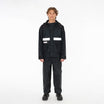



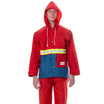


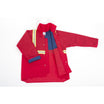

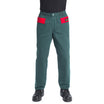



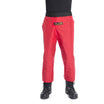





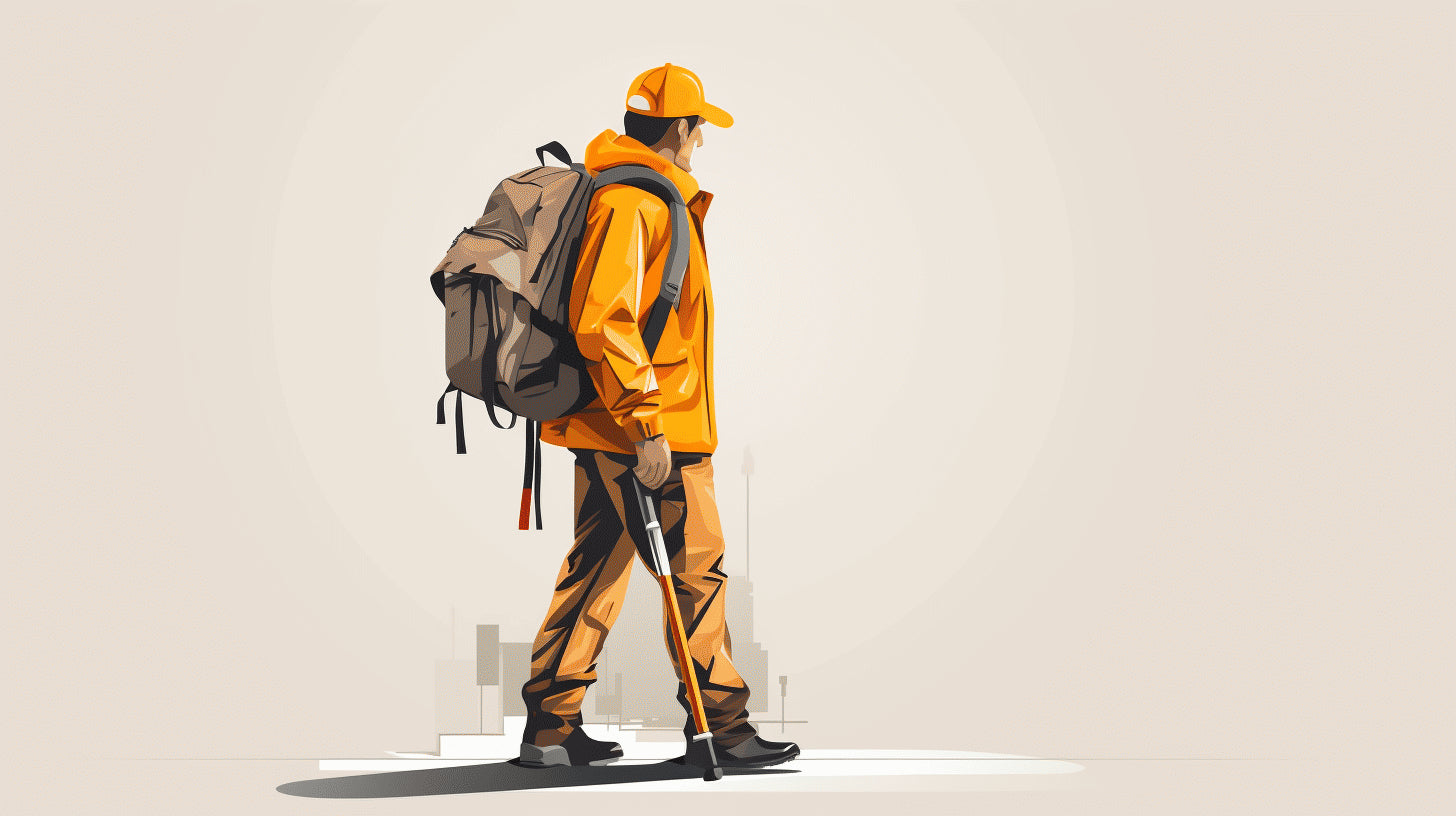
Leave a comment
This site is protected by hCaptcha and the hCaptcha Privacy Policy and Terms of Service apply.